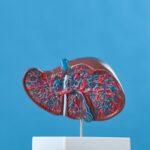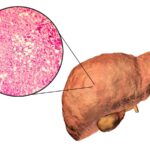Have you noticed your dog avoiding long walks, limping after exercise, or struggling to get up after resting? These could be the first signs of joint dysplasia, a condition that affects dogs of all breeds and ages. Dysplasia is a condition that can significantly reduce a dog’s comfort level, but the good news is that proper treatment, diet and supplementation can significantly improve a dog’s well-being and performance.
What is dysplasia, how to recognize it, and most importantly, how to support your dog with proper nutrition and daily care?
What is joint dysplasia in a dog and what breeds are at risk?
Joint dysplasia is a serious musculoskeletal condition that causes deformity and dysfunction of the hip or elbow joint. In a healthy joint, the head of the femur fits snugly into the acetabulum of the pelvis, allowing for smooth movement. In dysplasia, these components do not work together properly, resulting in pain, inflammation, and gradual degeneration of the joint.
Canine hip dysplasia or canine elbow dysplasia is more common in large and rapidly growing dogs. Labrador Retrievers, German Shepherds, Golden Retrievers, St. Bernards, Rottweilers, and Newfoundlands are particularly susceptible.
Although often associated with older dogs, the first signs can appear in puppies as young as a few months old. Abnormal joint development begins early, and untreated dysplasia leads to painful degeneration in the dog’s adult life. Testing for dysplasia in a dog, even prophylactically, is advisable.
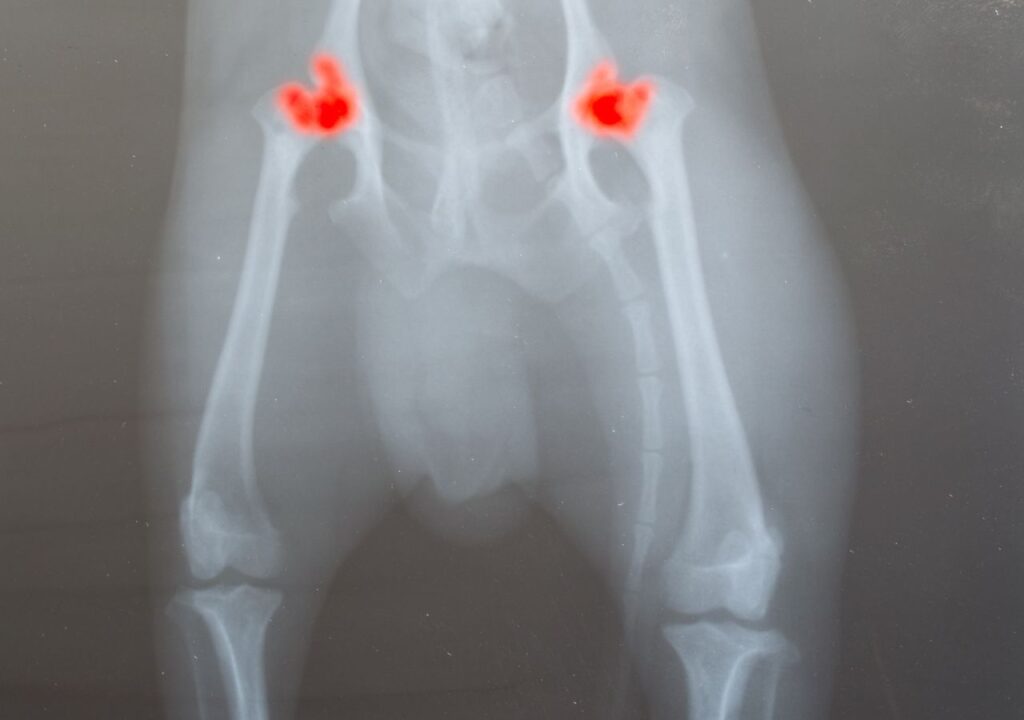
Symptoms of dysplasia in a dog – what to look for?
Joint dysplasia in a dog can develop gradually, so it is important for caregivers to be able to spot worrisome signs early. In the early stages, symptoms may be subtle and easy to overlook. To watch for:
- Reluctance to take long walks and play
- Difficulty getting up after resting
- Avoidance of jumping (e.g., into the car, onto the couch)
- Early fatigue with activity
Often caregivers think the dog is just “lazy” or “doesn’t like to play,” but this could be the first sign of joint pain!
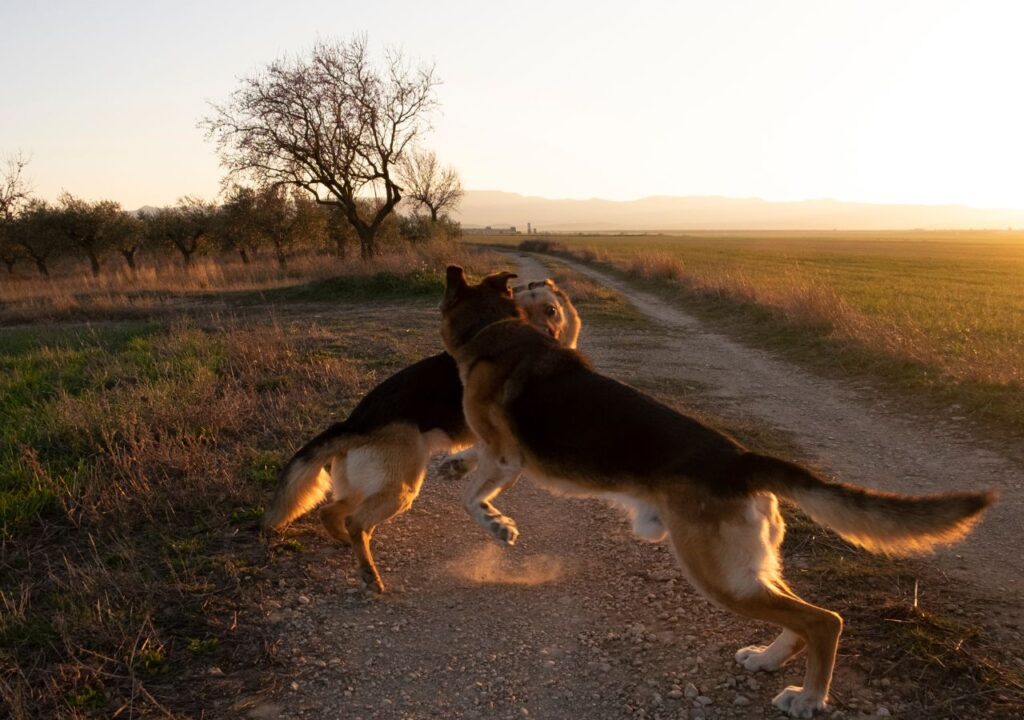
How does a dog’s gait and behavior change with dysplasia?
As the disease progresses, changes in the way the dog moves become more obvious:
- A stiff, cautious gait – the dog moves slowly, as if “on stiff legs
- Swaying of the hips – especially noticeable in large breeds
- Lameness, limping – may occur after exercise or be permanent
- Shifting of weight to the front paws – the dog relieves pressure on the painful hind legs
- Unusual sitting – instead of sitting up straight, the dog lies on its side
In addition, there are changes in behavior – some dogs become apathetic, avoiding contact, others may become irritable when touched in a painful area.
Dysplasia in a dog – how to treat it?
Hip dysplasia in a dog or joint dysplasia is not a curse! With proper treatment and daily care, you can significantly improve the comfort of your dog’s life, reduce pain and slow the progression of the disease. If the dysplasia is not very advanced, you can effectively relieve the symptoms with appropriate measures:
Physical therapy and rehabilitation
Specialized exercises help strengthen the muscles that stabilize the joints and reduce stress on painful areas. Regular rehabilitation can improve joint mobility and slow joint degeneration.
Painkillers and anti-inflammatory drugs
Your veterinarian may prescribe non-steroidal anti-inflammatory drugs (NSAIDs) to reduce pain and inflammation. In some cases, chondroprotective agents may also be used to help rebuild joint cartilage.
Weight Control
Being overweight is the number one enemy of dysplasia! Every extra pound puts stress on the joints, so a balanced diet and avoiding overfeeding with treats is key.
Appropriate Physical Activity
Short, frequent walks on soft surfaces (such as grass) are better than vigorous running or jumping. It’s a good idea to avoid slippery floors in the house, which can lead to slips and injuries.

Alternative methods of supporting a dog with dysplasia
More and more dog guardians are turning to additional methods to help their dog fight dysplasia:
Hydrotherapy
Swimming in special pools or water treadmills relieves stress on joints, strengthens muscles, and improves range of motion. This is great for dogs with limited mobility!
Acupuncture
Acupuncture can help relieve pain and muscle tension. It won’t replace veterinary treatment, but it can be a good addition to therapy.
Supplementation
Supplementation with chondroprotectants, omega-3 fatty acids and MSM supports joint health and has anti-inflammatory effects.
Comfortable conditions at home
A soft, orthopedic bed, non-slip mats on the floor, and steps to help climb onto the couch can greatly improve the daily life of a dog with dysplasia.

Diet and Supplementation – Key Support for Your Dog’s Joints
Proper nutrition plays an important role in the prevention and treatment of canine joint dysplasia. The right diet for a dog with dysplasia not only supports the regeneration of joint cartilage, but also helps with weight management, which is key to relieving stress on the joints. What should you know about feeding a dog with dysplasia?
Proper Calcium/Phosphorus Ratio – Why is it important?
In young, growing dogs, the proper balance of minerals, especially calcium (Ca) and phosphorus (P), is essential for proper skeletal development.
- The ideal calcium to phosphorus ratio is 1.2:1 to 1.5:1 – meaning there should be more calcium than phosphorus.
- Too much calcium can lead to abnormal bone growth and aggravate joint problems.
- Calcium deficiency weakens bones and increases the risk of deformities.
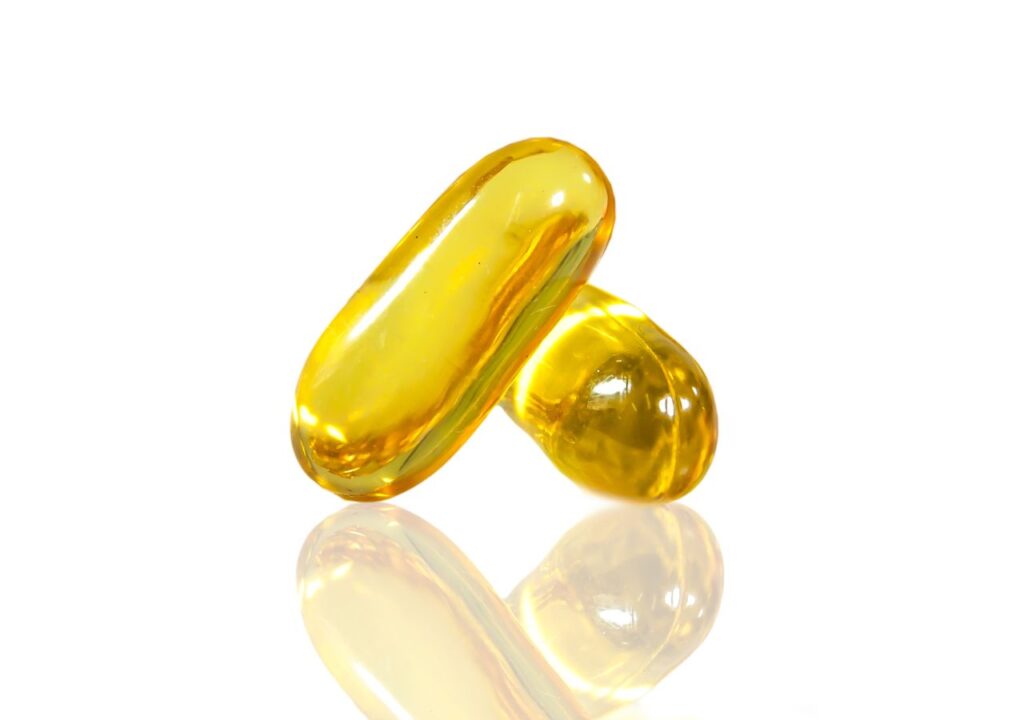
The importance of normal body weight in a dog
Overweight dogs are more prone to pain and faster joint degeneration. Even a small amount of weight loss can significantly improve mobility. Every extra pound puts more stress on the joints! How can you keep your dog’s weight in check?
- Feed a balanced diet without excess calories
- Avoid excessive treats – replace them with vegetables or fruit
- Provide regular, moderate walks – without overloading the joints



